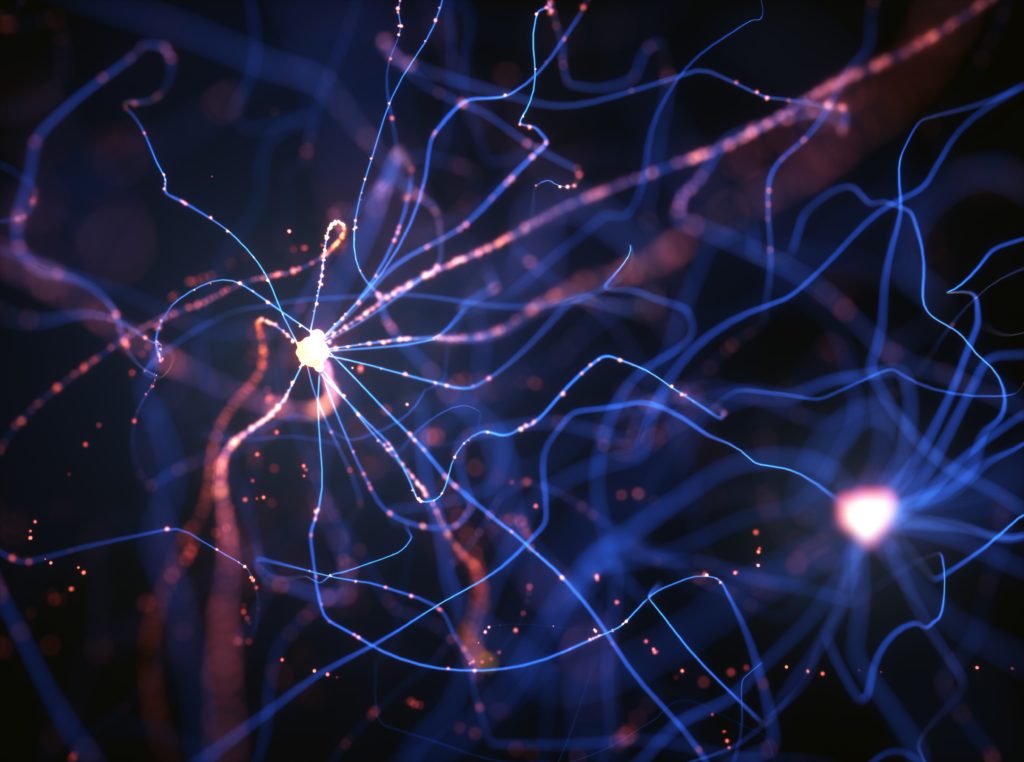Quick Hits
Daily brief research updates from the cognitive sciences

There are different types of dark matter in the brain. Matter that is often little researched or unknown to different population groups. I have written previously about glial cells and their contribution to just about everything, something neuroscientists know a lot about, to electrical neurons, that have been vastly under researched.
But now some researchers have made some discoveries in another area, and that is that of silent synapses. Synapses are the connections between your brain cells. The current understanding is that as you learn, develop new skills, synapses connect, and strengthen and build the networks in your brain – this is how your brain is continually growing and changing. However, these would always be part of a network. Silent, inactive synapses have been seen in the brains of developing mice so it was thought they played a key role in the developing brain but not in adults.
However, in an unexpected discovery MIT researchers have found silent synapses at levels 10 times higher than expected. The researchers were not actually looking for silent synapses but trying to measure neurotransmitter receptors on the branches of neurons. Some of these branches and connections, known as filopodia, are extremely fine and small and are difficult, or impossible, to see with standard imaging techniques.
On discovering these in such high quantities they then proceeded to investigate whether they were indeed silent synapses by attempting to stimulate these with a combination of a neurotransmitter and an electrical stimulus. They found that indeed these were silent but could grow into active synapses much quicker than by altering mature synapses.
That’s good news and this explains how we can learn things quicker – having silent synapses allows rapid learning and being able to build new memories without building whole new synapses.
Whether this is different between different people is another question – but I am hoping I have a bunch of silent synapses waiting to spring into action when I engage with new material – such as writing this article – go silent synapses, go!

Andy Habermacher
Andy is author of leading brains Review, Neuroleadership, and multiple other books. He has been intensively involved in writing and research into neuroleadership and is considered one of Europe’s leading experts. He is also a well-known public speaker, speaking on the brain and human behaviour.
Andy is also a masters athlete (middle distance running) and competes regularly at international competitions (and holds a few national records in his age category).
References
Vardalaki, D., Chung, K. & Harnett, M.T.
Filopodia are a structural substrate for silent synapses in adult neocortex.
Nature, 2022
DOI: 10.1038/s41586-022-05483-6
More Quick Hits
Mind Over Matter – Regaining Movement
This is the type of study and insight I like. Kind of amazingly simple but effective
Do We Lose Brain or Muscles First?
As we age things start to decline, we all know that – happens to the best of us…
Cravings for Fatty Food and the Gut-Brain Connection
Research hot off the presses is showing something interesting happening with our desire for fatty food….
How to Form Optimal Groups for Learning
There has been a long-standing debate and discussion in learning contexts for what is the best way to form groups for optimal learning when there are different abilities in those groups…
Extreme Temperatures Increase Hate Speech Online
I am sure we all know that feeling of getting more irritable when temperatures rise – well we now have evidence that…
News Addiction is Bad for Your Mental (and Physical) Health
Many years ago I first heard the advice of “Don’t watch the news if you want to be happy”…






